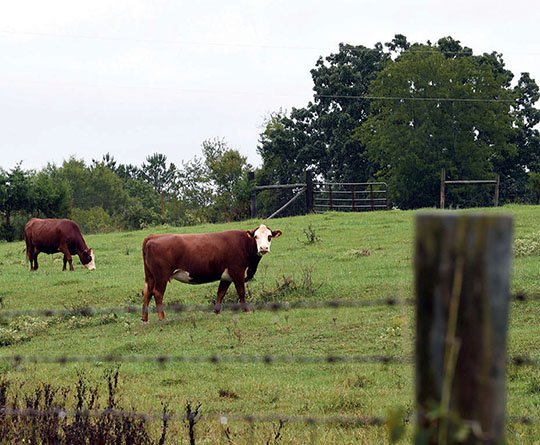The city will not use its condemnation authority to acquire 33 acres off Amity Road for construction of a water treatment plant for the city's Lake Ouachita allocation.
The Hot Springs Board of Directors will vote tonight on an ordinance approving the $15,000-per-acre purchase of pasture land on Little Mazarn Road south of Lake Hamilton in unincorporated Garland County. City Engineer Gary Carnahan told the board the acquisition will cost about $500,000 after closing costs and appraisal fees are added.
The $20 million bond issue the board approved earlier this year would fund the purchase, which, according to the real estate agreement attached to the ordinance, includes a 20-foot easement for a raw-water line across property the seller owns to the west.
An appraisal commissioned by Crist Engineers, the city's water system consultant, valued the land at $12,000 to $16,000 an acre. Garland County's contract appraisal service valued the two unimproved parcels involved in the purchase at $5,200 and $26,000, values based on the agricultural productivity of the land and not its market value.
Interim City Manager Bill Burrough said the prospect of a court valuing the land at the same price or more than the appraised value dissuaded the city from invoking its condemnation authority. Property owners can challenge the fairness of the price offered by the condemning authority, leading to a protracted court process if the two sides can't agree.
"We would've had to put money in escrow and have a court determine how much the land is worth," said Burrough, explaining that other properties considered for the plant site didn't have willing sellers. "It's likely it would go with the appraised value. At the end of the day we may have paid the same amount going through the condemnation process."
According to information presented to the board, the purchase includes 15.5 acres from the easternmost parcel, which is 30 acres, and 17.5 from the western parcel, which is 18 acres. Property records show the eastern parcel was acquired in 2013 and 2015 transactions totaling $68,000. The western parcel was acquired in 1999 for $60,000.
The trust that owns the land sold 2 unimproved acres on the other side of Little Mazarn Road for $40,000 in 2012, according to property records.
"(The owner) decided to start selling off his farm," Carnahan told the board last week. "We were able to negotiate a price. He was a willing seller. We felt like it was the right price for the property. It has favorable access with paved roads. Some of the other sites we looked at would've had to have a road built into the property. It's also at a good elevation."
A 42-inch diameter raw-water line would feed the plant from the intake the city plans on building at lower Lake Ouachita. Locating the plant 20 miles south of its source will improve the hydraulics of a sprawling distribution system with more than 800 miles of lines inside and outside the city, Crist has said.
Rather than feeding the 3 million-gallon storage tank the city is building behind Cornerstone Market Place from the plant on upper Lake Hamilton to the north, the new plant can fill the tank from the south. Crist has told the board putting finished water into the distribution system from the south will reduce pumping that puts pressure on aging water lines and lower water age for customers on the south and east end of the system.
All of the system's finished water currently originates from plants at the northwest and north ends of the system.
The Environmental Protection Agency has linked long-term exposure to trihalomethane, or THM, a byproduct of the chlorine disinfection used to treat water, to an increased risk of liver and kidney cancer. Samples taken from the south and east ends of the regional water system have shown concentrations in excess of the 80-parts-per-billion limit set by the EPA.
THM concentrations increase the longer treated water remains in the distribution system, putting customers at the far end of the system at risk.
Crist told the board last year a 15 million-gallon-a-day treatment plant would cost $21.5 million to build. The 20-mile raw water line connecting it to the Lake Ouachita intake would cost almost $30 million, and $13.6 million would be needed to build large and small distribution lines from the plant. The intake had a $10.7 million cost estimate.
The $20 million bond issue approved earlier this year is funding most of the $4.65 million cost of the new storage tank and would pay the entirety of the plant site purchase. The city plans on floating $90 million of additional debt issued in $30 million installments beginning in 2020 to pay for the intake, raw water line, plant and distribution improvements.
The $110 million of indebtedness will be secured by the water-rate increase the board approved last year. The $4.99 base rate from last year will increase to $13 by 2021. The base rate is applied to the first 1,000 gallons of usage.
Local on 10/16/2018